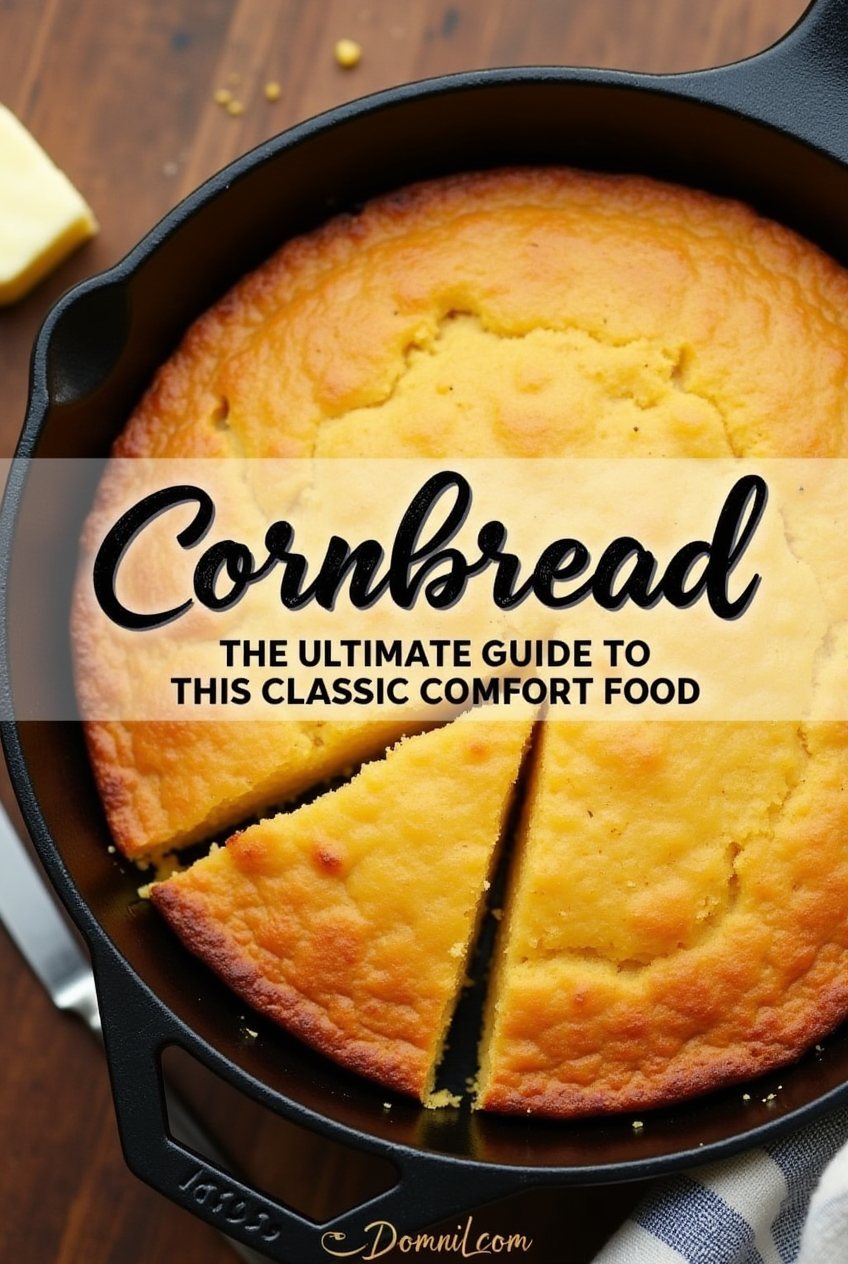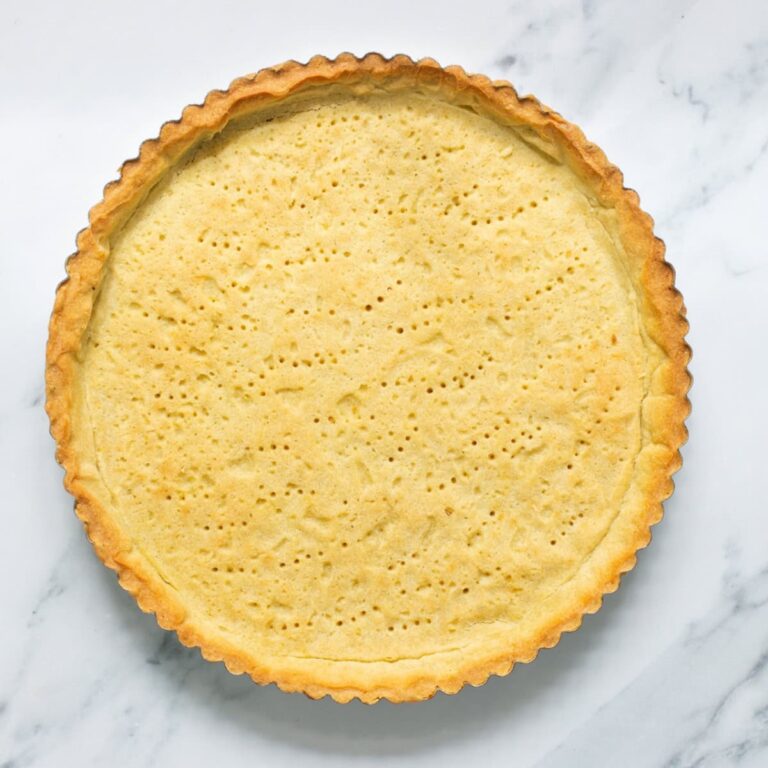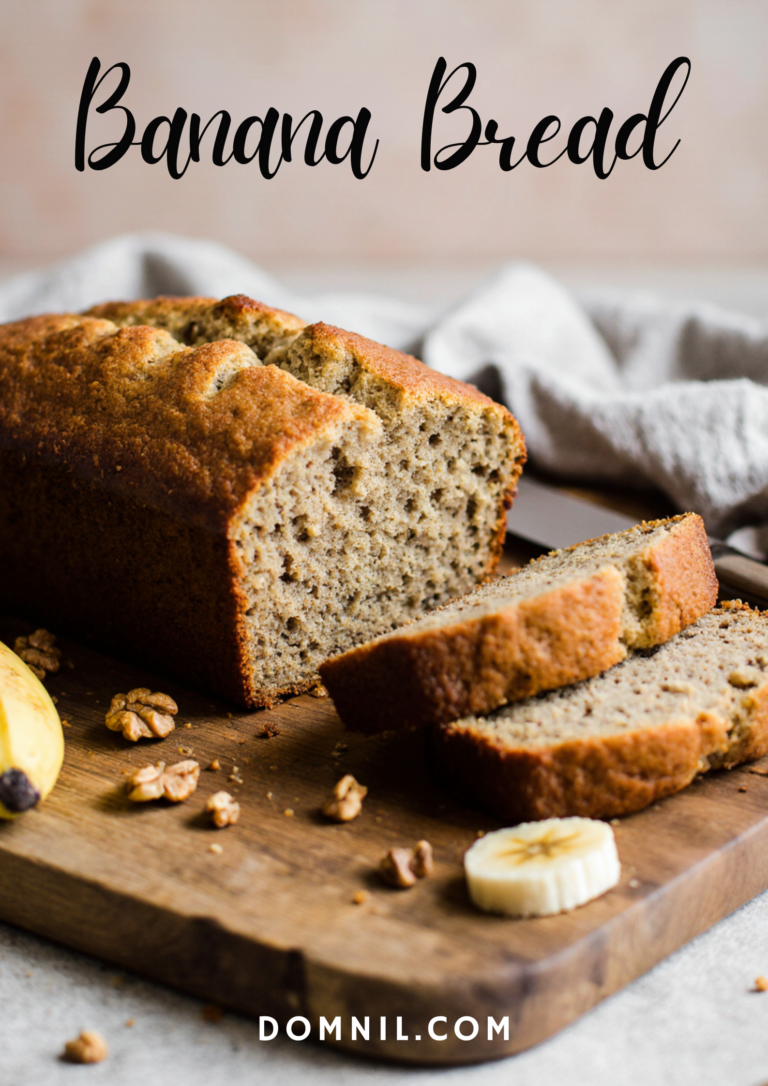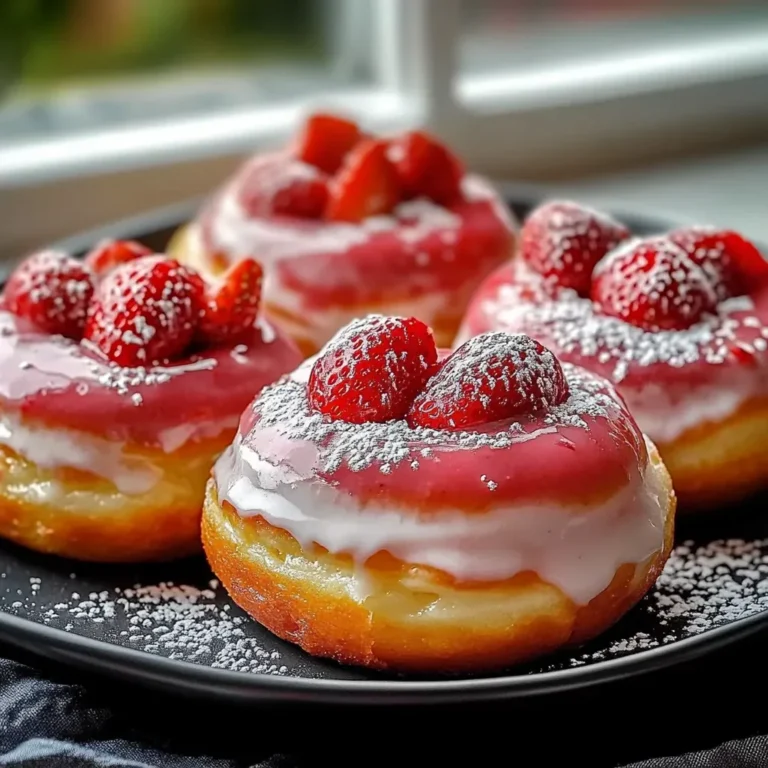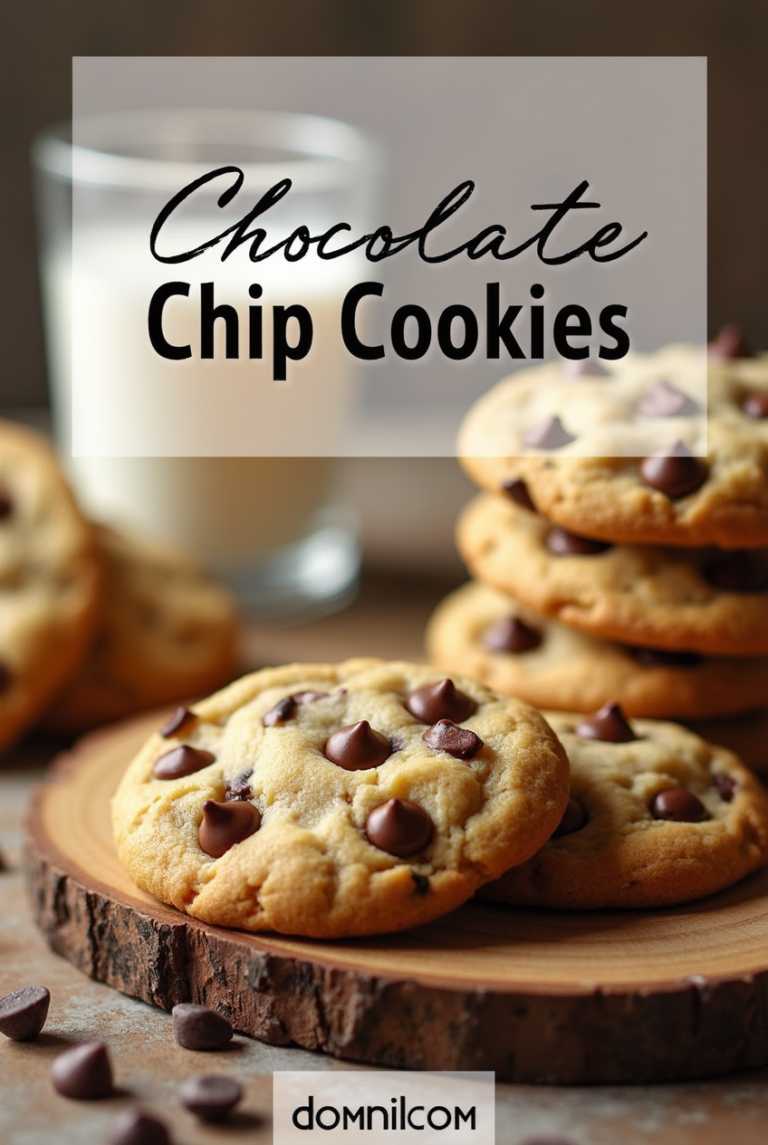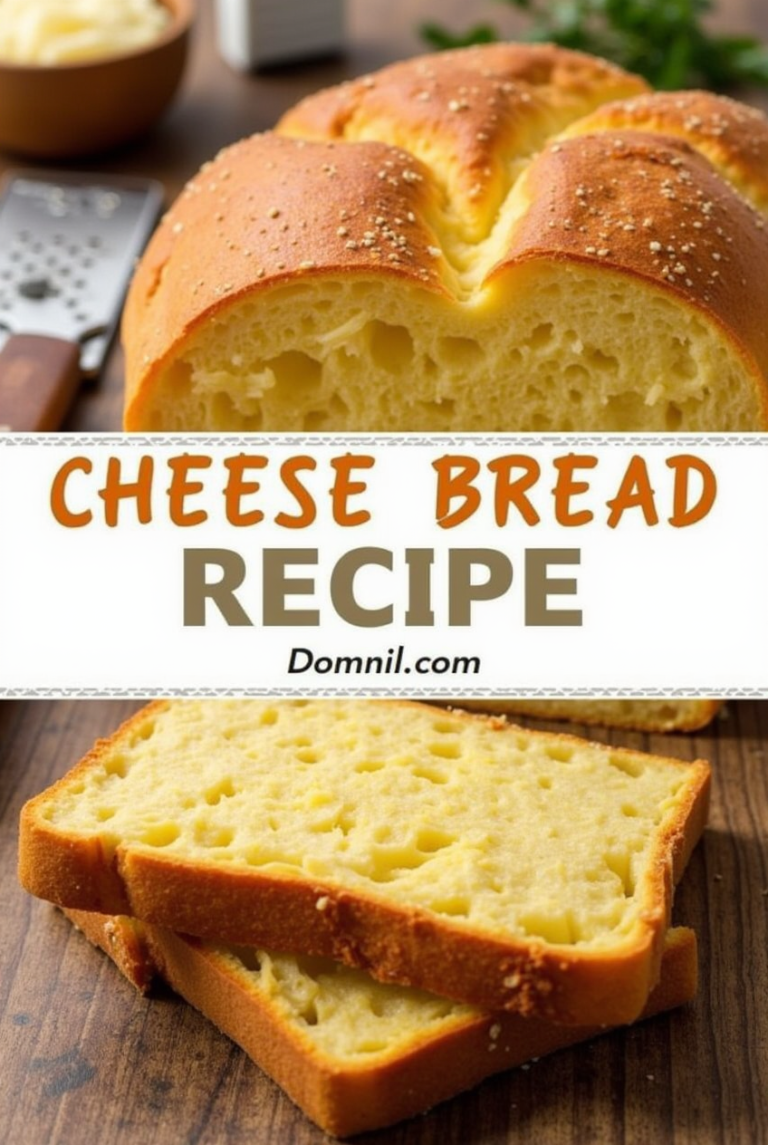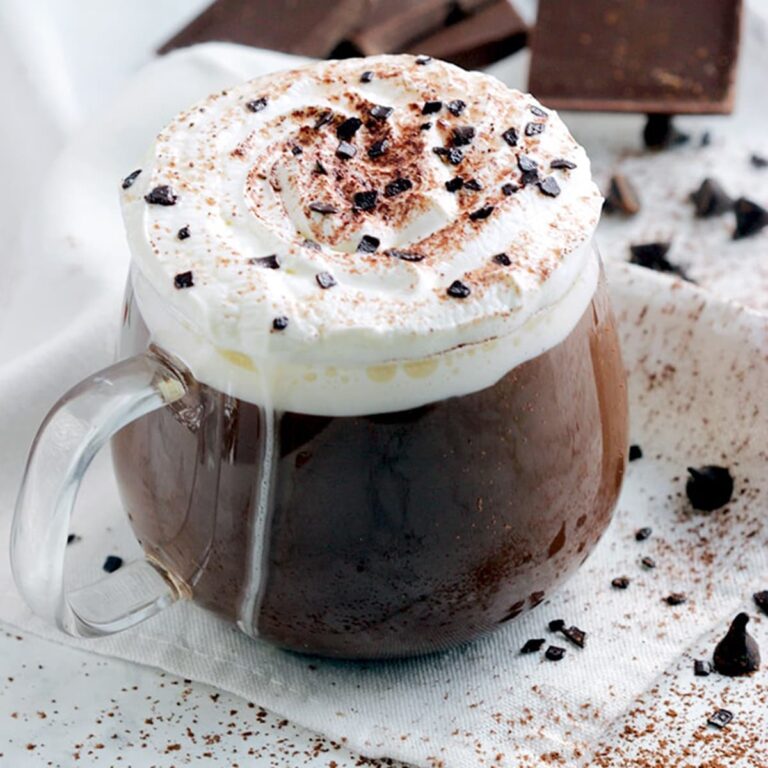Cornbread: The Ultimate Guide to This Classic Comfort Food
What is Cornbread?
Cornbread is more than just a side dish—it’s a staple of American comfort food. Made primarily from cornmeal, this bread is known for its dense texture, golden crust, and slightly crumbly nature. Unlike your typical yeast-based bread, cornbread is a quick bread, meaning it relies on baking powder or baking soda as leavening agents instead of yeast. This gives it a distinctively light, cake-like consistency while still delivering a hearty, satisfying bite.
What sets cornbread apart from other baked goods is its versatility. Whether you like it sweet with a pat of butter and drizzle of honey or savory and served with chili or greens, cornbread can do it all. And let’s not forget the sound it makes when it comes out of a hot cast-iron skillet—that sizzling crust is like music to a cook’s ears.
Its appeal lies not just in its simplicity but in how it brings people together around the dinner table. In fact, it’s often said that the smell of freshly baked cornbread can make a house feel like home. It’s the kind of food that makes you close your eyes with the first bite and say, “Now that’s comfort.”
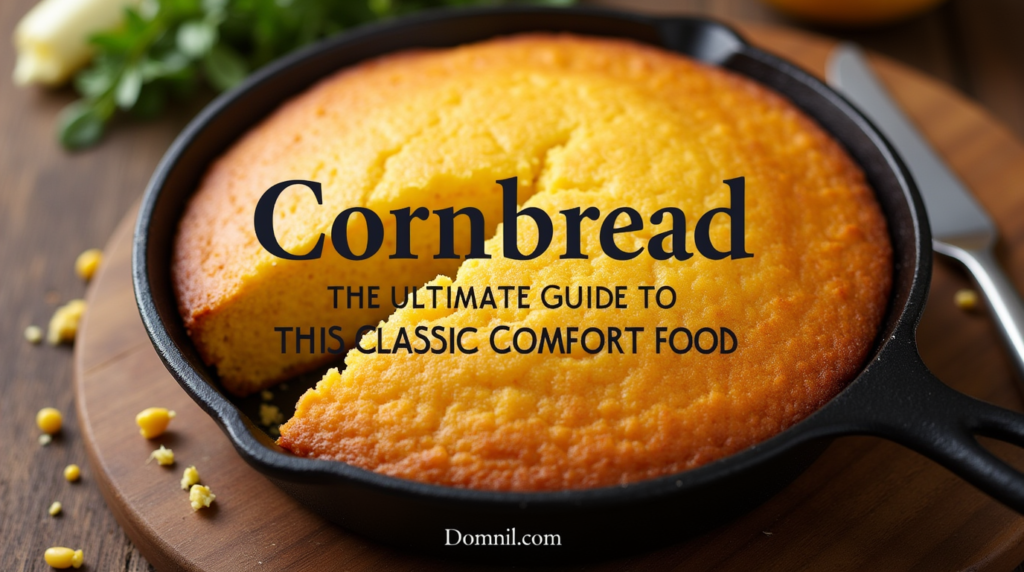
Table of Contents
A Brief History of Cornbread
Cornbread’s history is deeply rooted in Native American traditions. Long before European settlers arrived, indigenous tribes were grinding maize into meal to make simple bread. Early versions were made with just cornmeal and water, then cooked over open flames or on hot stones. These early breads were rustic but nourishing, and they laid the groundwork for the cornbread we know today.
When European colonists settled in the Americas, they adapted these native recipes using their own cooking methods and ingredients. Over time, with the introduction of baking soda and buttermilk, cornbread evolved into the fluffy, flavorful dish we’re familiar with now. By the 18th and 19th centuries, it had become a staple in Southern kitchens, especially among families who didn’t have easy access to wheat flour.
The Civil War era helped cement cornbread’s place in American culinary history. With the South cut off from many of its food supplies, cornmeal was often the most available and affordable ingredient. People got creative, using it to make hoecakes, Johnny cakes, hushpuppies, and more. Cornbread was a means of survival—but also a source of pride and identity.
Fast forward to today, and you’ll find cornbread in everything from upscale restaurants to backyard barbecues. Its journey from ancient hearths to modern kitchens is a testament to its timelessness and adaptability.
The Cultural Significance of Cornbread
Cornbread in Southern Cuisine
If you ask a Southerner about cornbread, you’re likely to get a passionate, maybe even heated, response. That’s because in the South, cornbread isn’t just food—it’s tradition. Passed down through generations, often with handwritten recipes stained by decades of use, cornbread has become a symbol of heritage and home.
Southern cornbread is famously unsweetened, often baked in a cast-iron skillet to get that signature crispy crust. It’s not unusual for it to accompany dishes like collard greens, black-eyed peas, fried chicken, and barbecue. Some Southerners even crumble it into buttermilk or pinto beans—a practice lovingly referred to as “potlikker soppin’.”
In many Southern homes, Sunday dinner isn’t complete without a golden round of cornbread in the center of the table. It’s both comfort food and a memory-maker. The smell wafting from the oven might remind someone of their grandmother’s house, a family reunion, or a cold winter night warmed by a hearty bowl of chili and cornbread.
Beyond taste and tradition, cornbread also plays a role in storytelling. It often appears in Southern literature, music, and film, serving as a symbol of simplicity, resilience, and community. It reminds us that good food doesn’t have to be fancy to be meaningful.
Cornbread Across the United States
While cornbread is closely associated with the South, it’s loved far and wide across the United States. In the North, you’re more likely to find sweet cornbread—soft, fluffy, and often served with butter and honey. It’s a popular side for holiday meals like Thanksgiving, where it complements everything from turkey to stuffing.
In the Midwest, cornbread frequently appears at potlucks and church gatherings, often baked in muffin tins for easy serving. It’s paired with chili during football games and tailgates, and no country-style breakfast buffet is complete without it.
Even in the Southwest, you’ll find cornbread varieties infused with local flavor—think green chiles, cheddar cheese, or even jalapeños. Each region adds its own twist, but the heart of the dish remains the same: it’s affordable, filling, and made with love.
This national appreciation has even led to cornbread festivals, cook-offs, and dedicated food blogs. The National Cornbread Festival in South Pittsburg, Tennessee, is an annual celebration that draws thousands of attendees from around the country. With contests, tastings, and live music, it’s proof that cornbread isn’t just food—it’s a movement.
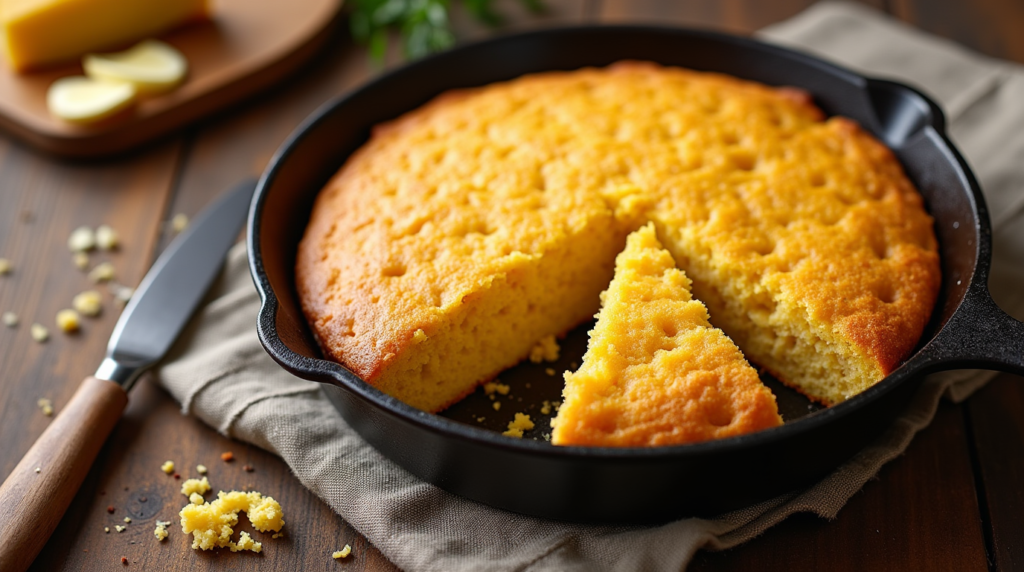
Main Ingredients
Cornmeal: The Star of the Show
Cornmeal is the soul of cornbread. Made from dried and ground corn, this humble ingredient dictates the flavor, texture, and color of your bread. It comes in a few varieties—yellow or white, coarse or fine—and each one brings its own flair to the table.
Yellow cornmeal is the most commonly used, offering a sweet, slightly nutty flavor that enhances the rustic taste of cornbread. White cornmeal, on the other hand, is milder and often preferred in traditional Southern recipes. Coarsely ground cornmeal provides a crunchier texture, while finer grinds yield a softer, more cake-like result.
Choosing the right cornmeal can make or break your cornbread. Stone-ground cornmeal is often favored by purists because it retains more of the corn’s natural oils and flavor. It also adds a little grit and chewiness that gives cornbread its characteristic heartiness. If you want a cleaner, more refined taste, go with degerminated cornmeal—though you might lose some of the flavor complexity.
Cornmeal isn’t just about taste; it’s also about texture. It gives cornbread that gritty, satisfying bite that pairs so beautifully with silky beans, juicy meats, or tangy greens. When you bite into good cornbread, you’re not just tasting corn—you’re tasting tradition.
The Role of Buttermilk and Eggs
While cornmeal provides the backbone, buttermilk and eggs are the glue that holds everything together. These two ingredients give cornbread its signature moisture, richness, and lift.
Buttermilk, with its tangy acidity, reacts with baking soda to help the batter rise and fluff up in the oven. It also adds a tender crumb and a subtle sour note that balances the sweetness of the cornmeal. If you’ve ever had cornbread that tasted flat or dry, chances are it was missing that buttermilk magic.
Eggs, meanwhile, are the binding agents. They help give structure to the bread, so it doesn’t crumble into a pile of corn dust when you try to slice it. Eggs also add richness and help with browning, giving your cornbread that mouthwatering golden crust on top.
Want to level up your game? Try using farm-fresh eggs or homemade buttermilk. The fresher your ingredients, the more flavorful and moist your cornbread will be. And if you’re dairy-free, don’t worry—there are plenty of plant-based substitutes like almond milk with apple cider vinegar, or flaxseed eggs that can get the job done while still delivering on taste.
Add-Ins and Variations
Once you’ve nailed down the basics, it’s time to play. Cornbread is one of the most customizable breads out there. You can keep it simple or go wild—your kitchen, your rules.
Here are some popular and delicious add-ins that people love to toss into their cornbread:
- Cheese – Sharp cheddar, Monterey Jack, or even pepper jack for a spicy kick.
- Jalapeños – Bring the heat and add a little crunch with sliced jalapeños.
- Corn kernels – Fresh, canned, or frozen corn adds texture and sweetness.
- Bacon – Because, well… bacon makes everything better.
- Honey or sugar – For a sweeter version, great with breakfast or dessert.
- Herbs – Chopped chives, rosemary, or thyme can elevate the flavor.
- Onions or scallions – Sautéed onions give it a savory edge.
You can also experiment with different flours—like mixing in some whole wheat or almond flour—for a heartier or gluten-free version. Or, add a dollop of sour cream or yogurt to the batter for extra richness.
Cornbread is like a blank canvas, ready for your creative brushstrokes. And the best part? Even when you switch it up, the heart of the dish stays true—warm, satisfying, and unforgettable.
Types
Southern vs. Northern Cornbread
This is where things get a little controversial—yes, cornbread can be a source of regional pride and rivalry. The battle between Southern and Northern cornbread has raged for decades, and each side has its loyalists.
Southern cornbread is typically savory, with very little (if any) sugar. It’s often made with white cornmeal, no flour, and baked in a cast-iron skillet. The result? A dense, crumbly texture with a crispy, almost fried-like crust. It’s meant to be rustic, robust, and full of character.
Northern cornbread, by contrast, leans toward the sweeter side. It’s usually made with a blend of cornmeal and flour, giving it a more cake-like texture. Yellow cornmeal is more common here, and sugar (sometimes quite a bit) is added to appeal to sweeter palates. It’s often baked in square pans or muffin tins.
While Southerners might scoff at the “cake” their Northern cousins call cornbread, the truth is, both versions have their charm. Whether you like it sweet or savory, crumbly or soft, there’s room for all kinds of cornbread at the table. Think of them as siblings—related, but with wildly different personalities.
Skillet Cornbread
Ah, skillet cornbread—the king of all cornbreads. If you’ve never tried it, stop what you’re doing and get yourself a cast-iron skillet ASAP. This version is iconic for a reason: it delivers a crisp, golden crust that no baking dish can replicate.
The trick lies in preheating the skillet with oil or butter before pouring in the batter. That sizzle when the batter hits the hot pan? That’s your crust forming in real time. Once it bakes, the edges get delightfully crunchy while the inside stays moist and tender.
Skillet cornbread is often made Southern-style, but you can tweak it to suit any preference. Add a handful of cheddar for a cheesy crust, toss in jalapeños for heat, or swirl in some honey for a sweet twist.
Not only does the skillet give you texture heaven, but it also offers even cooking and a rustic presentation. Serve it right out of the pan at the table, and you’ll get some serious “wow” factor—plus fewer dishes to wash!
Sweet Cornbread
Sweet cornbread gets a lot of love in the North and among people who prefer their bread on the dessert-y side. It’s typically softer, fluffier, and often eaten warm with butter and honey or jam.
This version usually includes a good amount of sugar (sometimes even up to half a cup), and often a little flour to lighten the texture. Milk or cream is used instead of buttermilk, and some bakers go a step further by adding vanilla extract or cinnamon for added depth.
Sweet cornbread is perfect for breakfast, brunch, or as a side with spicy dishes like chili, where its sweetness balances the heat. It’s also a hit with kids—probably because it tastes like cake with a corn-kissed twist.
The key to great sweet cornbread is balance. You want it to taste like corn first and sugar second. Overdo it, and you’ll end up with something that’s more cupcake than cornbread. But when done right, sweet cornbread can be a real showstopper.
Cornbread Muffins
Cornbread muffins are the most portable and party-friendly version of this classic dish. They’re ideal for potlucks, picnics, and holiday feasts, thanks to their single-serve size and no-mess appeal.
What makes muffins special is their versatility. You can bake a batch of plain ones or mix in savory or sweet additions depending on the occasion. They cook faster than a full loaf and often have a higher crust-to-crumb ratio, which many cornbread lovers adore.
Want to impress at your next gathering? Try a muffin tin with a combination of mix-ins—some cheesy, some sweet, some spicy. Arrange them on a platter and let guests pick their favorites. Muffin-style cornbread is also great for stuffing during Thanksgiving—just crumble it up, add herbs, and you’ve got the base for a killer stuffing.
How to Make Classic Cornbread
Tools You’ll Need
Making great cornbread doesn’t require fancy equipment, but having the right tools can make all the difference between “just okay” and “absolutely divine.” Here’s a list of essential kitchen tools you’ll want to have on hand when making classic cornbread:
- Cast-Iron Skillet: The MVP of Southern-style cornbread. It ensures an evenly baked crust and gives your bread that crisp, golden edge everyone loves.
- Mixing Bowls: You’ll need at least two—one for dry ingredients and one for wet. This makes combining easier and prevents overmixing.
- Whisk: Great for beating eggs and mixing your wet ingredients thoroughly.
- Rubber Spatula or Wooden Spoon: For gently folding your ingredients together without deflating the batter.
- Measuring Cups and Spoons: Accuracy is key to consistent results, especially for baking.
- Oven Mitts: That skillet gets hot. Don’t forget to protect your hands.
- Cooling Rack: Helps the cornbread cool evenly and avoids soggy bottoms from steam.
If you don’t have a cast-iron skillet, don’t panic. You can also use a square baking dish, pie pan, or even muffin tins. Just be sure to preheat your baking vessel if you’re after that crispy crust!
Bonus tools if you’re going next-level:
- Cornbread Pan: These have corn-shaped molds and are great for presentation.
- Pastry Brush: For greasing pans or brushing melted butter on top post-bake.
- Food Thermometer: Want to be extra precise? Cornbread is usually done at an internal temp of about 190°F (88°C).
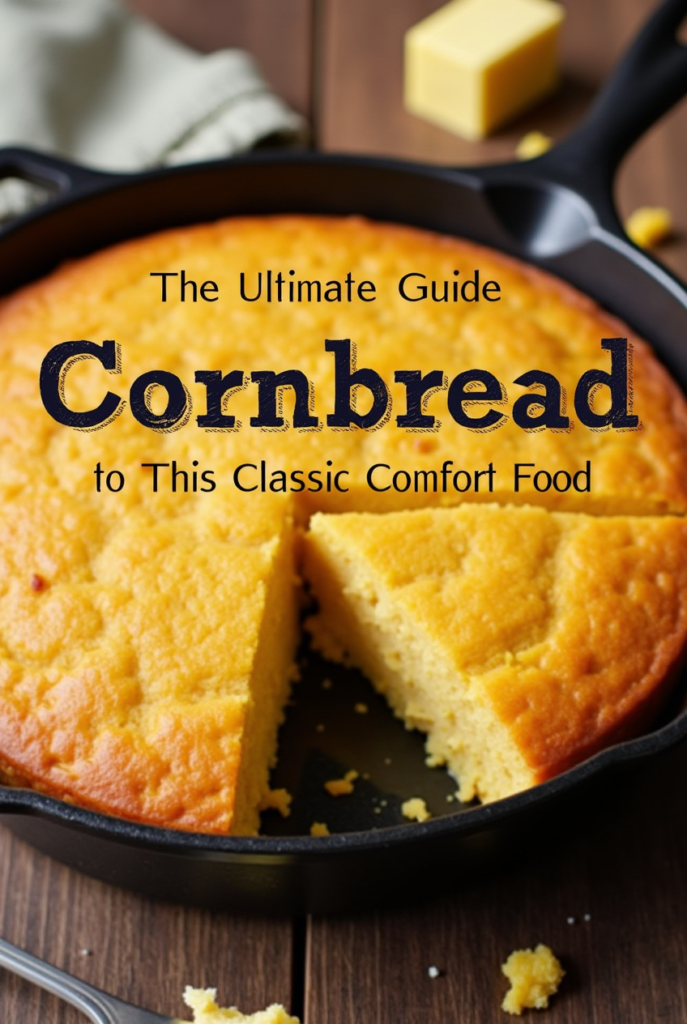
Step-by-Step Recipe
Here’s a tried-and-true recipe for classic Southern-style cornbread that’s crispy on the outside and moist on the inside—just like Grandma used to make.
Ingredients:
- 1 cup cornmeal (stone-ground preferred)
- 1 cup all-purpose flour
- 1 tablespoon baking powder
- 1/2 teaspoon baking soda
- 1/2 teaspoon salt
- 1 1/4 cups buttermilk
- 2 large eggs
- 1/4 cup melted butter (plus 1 tablespoon for greasing)
- Optional: 1-2 tablespoons sugar (if you want a hint of sweetness)
Instructions:
- Preheat your oven to 425°F (220°C). Place your cast-iron skillet inside to heat while you mix your ingredients.
- In a large mixing bowl, combine the cornmeal, flour, baking powder, baking soda, and salt.
- In another bowl, whisk together the buttermilk, eggs, and melted butter.
- Make a well in your dry ingredients, then pour in the wet mixture. Stir until just combined. Do not overmix—this can make the bread dense.
- Carefully remove the hot skillet from the oven. Add 1 tablespoon of butter and swirl it around until it sizzles and coats the bottom.
- Pour the batter into the hot skillet, smoothing the top with a spatula. You should hear a sizzle when the batter hits—this means the crust is forming!
- Bake for 20–25 minutes, or until the top is golden brown and a toothpick comes out clean.
- Let it cool in the skillet for 5–10 minutes before slicing and serving.
Enjoy your cornbread hot, slathered in butter, dipped in chili, or just straight from the skillet.
Essential Tools
1. Cast-Iron Skillet
- Why it’s essential: This is the traditional and most recommended vessel for baking cornbread. It retains and distributes heat evenly, which is key for getting that signature crispy crust.
- Size suggestion: An 8- to 10-inch skillet is ideal for most recipes.
2. Mixing Bowls
- You’ll need at least two:
- One for dry ingredients (cornmeal, flour, baking soda, salt)
- One for wet ingredients (buttermilk, eggs, melted butter)
- Use deep, wide bowls to make mixing easy without spilling.
3. Whisk
- Essential for blending the eggs and wet ingredients smoothly.
- Also helps aerate your mix slightly, which contributes to a fluffier crumb.
4. Wooden Spoon or Rubber Spatula
- Use this to gently mix the wet and dry ingredients.
- Important to not overmix the batter, and these tools help you fold gently.
5. Measuring Cups and Spoons
- Precision matters, especially with baking powder and baking soda.
- Make sure to level off dry ingredients for accuracy.
6. Oven Mitts or Heat-Resistant Gloves
- A hot cast-iron skillet can reach over 400°F and stay hot for a long time.
- Never handle your pan without proper protection.
7. Pastry Brush (Optional but Handy)
- For brushing butter onto your skillet or on top of the finished bread.
- Gives your cornbread a glossy, buttery finish and prevents sticking.
8. Cooling Rack
- Place your skillet or baking dish on a cooling rack after baking.
- It helps air circulate under the pan and avoids soggy bottoms.
Optional But Useful Add-ons
- Cornbread Pan (Corn Stick Mold): For novelty-shaped pieces with more crispy edges.
- Food Thermometer: To check for doneness (look for 190–200°F internal temp).
- Muffin Tin: If you want to make individual servings or a portable version.
- Blender or Food Processor (if adding fresh corn or unique ingredients): To puree for smoother batter texture.
Tips for the Perfect Texture and Flavor
Want your cornbread to steal the show every single time? These pro tips will help you achieve the perfect balance of crisp crust, fluffy interior, and that unmistakable corn flavor.
1. Don’t Overmix
Mix your batter until just combined. Overworking it can make the bread tough instead of tender. A few lumps? Totally fine.
2. Preheat Your Skillet
This is the golden rule for crispy crusts. A hot skillet creates that beautiful outer layer the moment the batter hits the pan.
3. Use Fresh Ingredients
Old cornmeal or expired baking powder can sabotage your results. Always check the freshness of your pantry staples.
4. Buttermilk Is King
Buttermilk adds tang and reacts with baking soda for extra fluff. No buttermilk? Add a tablespoon of lemon juice or vinegar to a cup of milk and let it sit for 5 minutes.
5. Play With Fat
Butter adds flavor, but bacon grease gives cornbread an irresistible smoky edge. Try using it in place of oil or butter for greasing the skillet.
6. Balance Your Sugar
Even if you prefer savory cornbread, a small amount of sugar (1–2 tbsp) can enhance flavor without making it dessert-like.
7. Don’t Skip the Rest
Let your batter sit for 5–10 minutes before baking. This allows the cornmeal to absorb the liquid and results in a better texture.
8. Test for Doneness
Use a toothpick to check the center. If it comes out clean, your cornbread is done. No one wants raw batter in the middle!
Master these tips, and your cornbread will become the stuff of legend—whether you’re feeding a crowd or just craving a warm, buttery slice for yourself.
Conclusion
Cornbread isn’t just a side dish—it’s a symbol of tradition, comfort, and creativity in the kitchen. From its ancient Native American origins to its current place on dinner tables across the U.S., cornbread has evolved but never lost its heart. Whether you’re loyal to the savory, skillet-baked Southern variety or swear by the sweet, fluffy Northern style, there’s no denying that cornbread brings people together like few other dishes can.
Its simplicity is part of its magic. With just a few basic ingredients—cornmeal, buttermilk, eggs—you can whip up something that feels like a warm hug on a plate. And with endless variations, from spicy jalapeño-cheddar to honey-butter glazed muffins, you can make cornbread your own with very little effort.
More than just food, cornbread is a connection to heritage, to home-cooked meals, to memories made around the dinner table. It’s what you make when you want to impress your guests without breaking a sweat, or when you’re just in the mood for something cozy and filling.
So grab your cast-iron skillet, preheat that oven, and let the smell of freshly baked cornbread fill your kitchen. It’s not just cooking—it’s an experience.
FAQs
1. Can I make cornbread without a cast-iron skillet?
Absolutely! While a cast-iron skillet gives you the iconic crispy crust, you can still bake cornbread in a regular baking dish, pie pan, or even muffin tins. Just grease your pan well and preheat it if possible to mimic that crust effect.
2. How do I store leftover cornbread?
Wrap it tightly in foil or place it in an airtight container. You can store it at room temperature for up to 2 days or refrigerate it for about a week. To reheat, pop it in the oven for a few minutes or microwave it with a damp paper towel to keep it moist.
3. Can I freeze cornbread?
Yes! Let it cool completely, wrap it in plastic wrap and then foil, and freeze for up to 3 months. Thaw at room temperature or in the fridge before reheating. Great for meal prep or holiday leftovers.
4. Why did my cornbread turn out dry?
Dry cornbread usually means you either overbaked it, didn’t use enough fat, or the cornmeal-to-liquid ratio was off. Try using buttermilk, adding a touch more butter, or shortening the bake time slightly next time.

